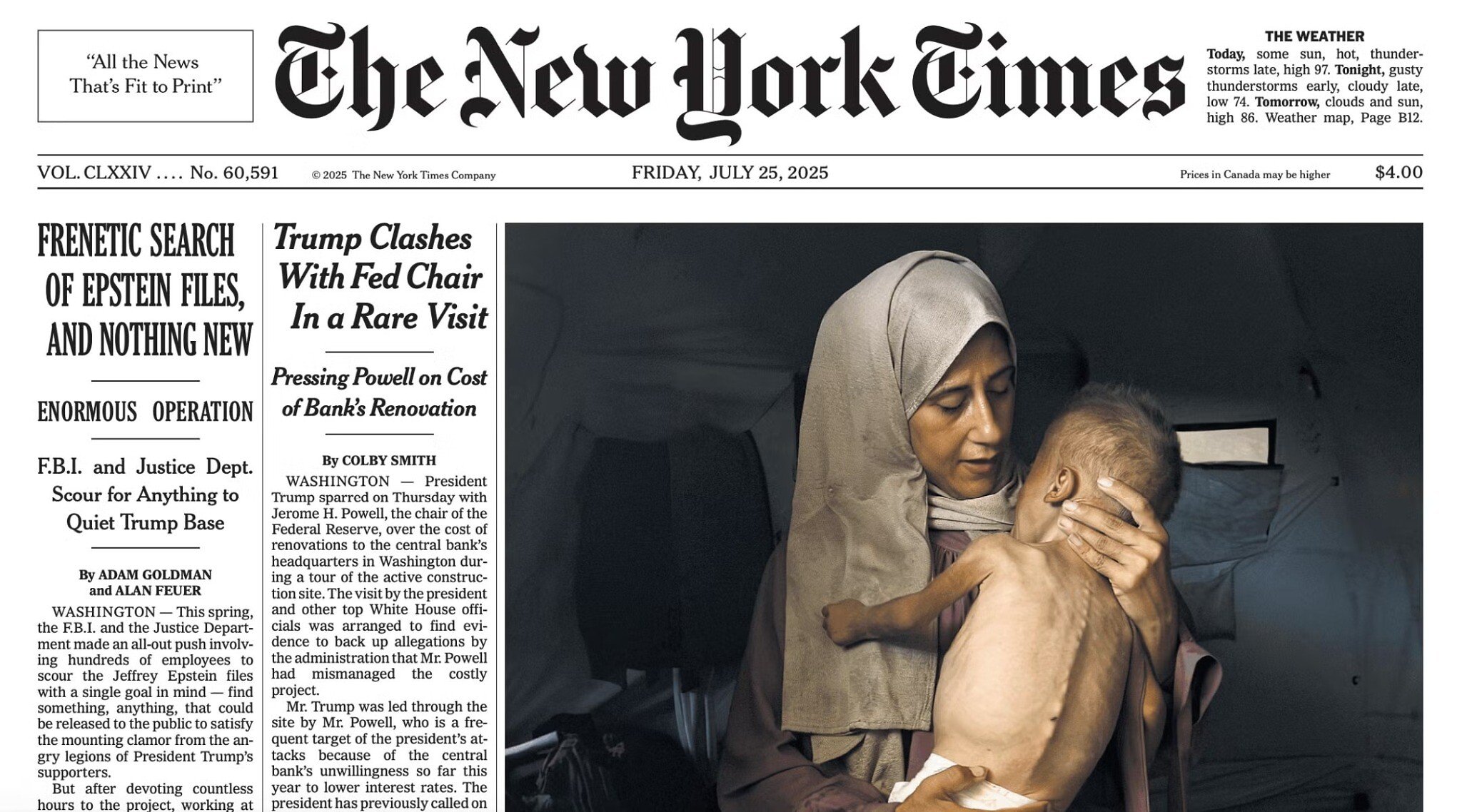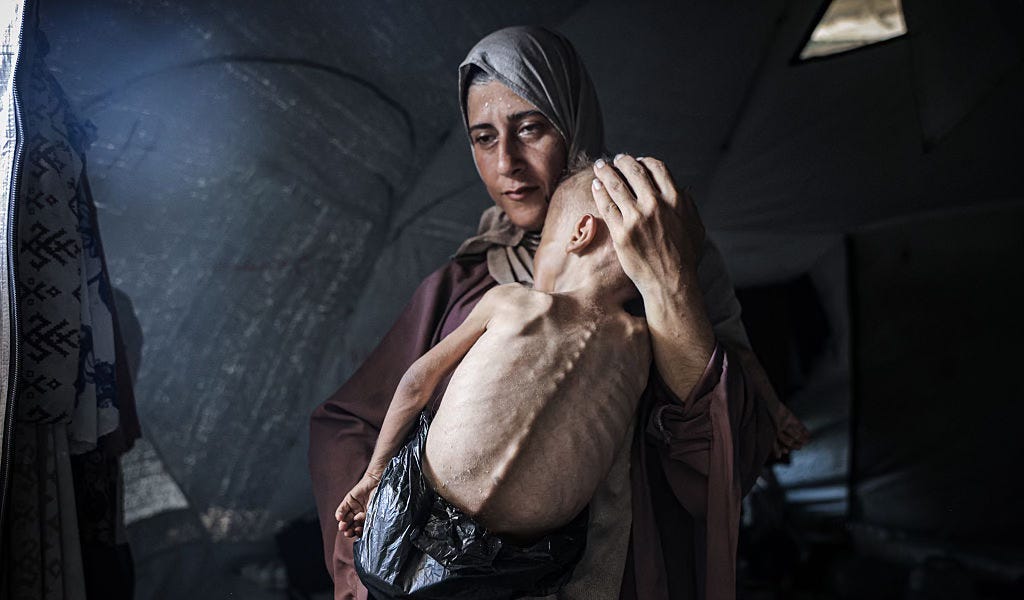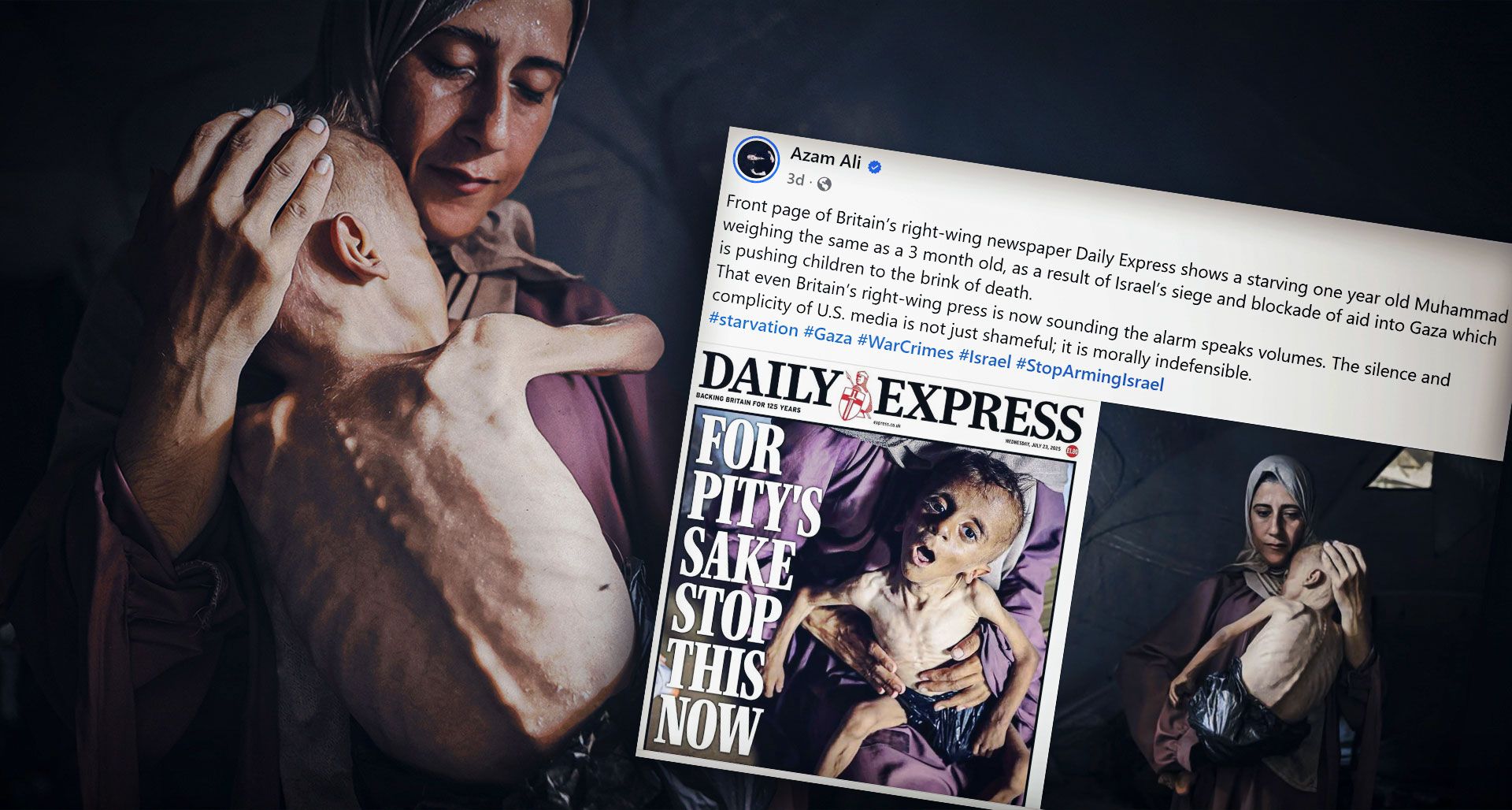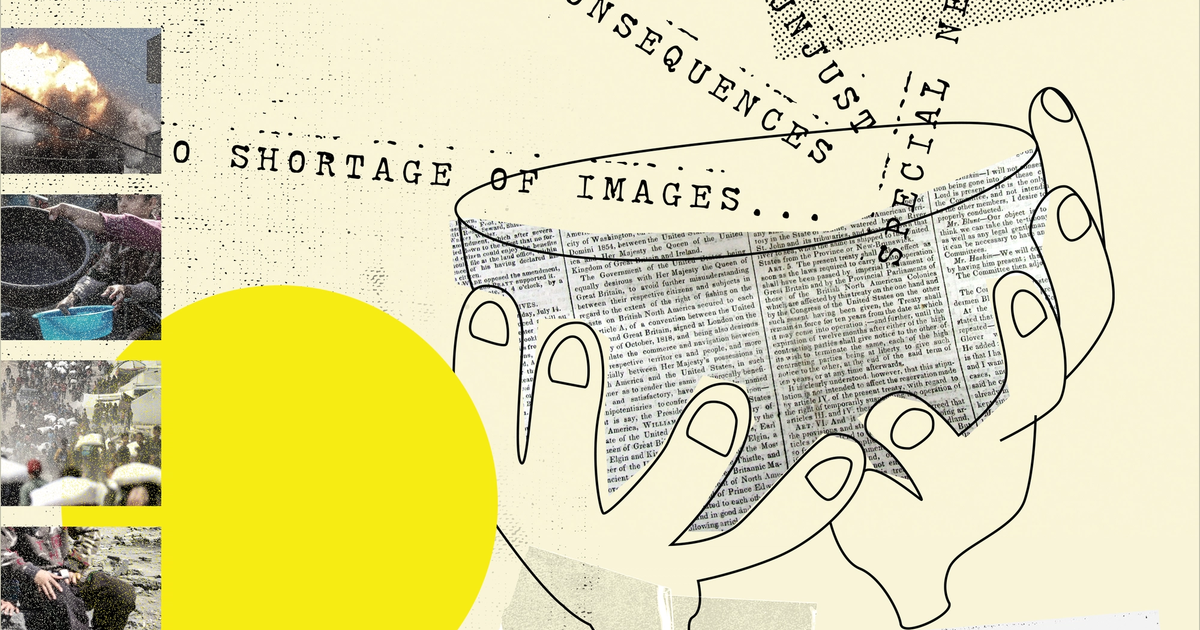T4K3.news
New York Times corrects story about Gaza child
The Times acknowledges that Mohammad al-Mutawaq suffers from serious pre-existing health issues.

The New York Times corrects its story about an emaciated child, revealing pre-existing health issues.
New York Times faces scrutiny over Gaza child photo correction
The New York Times issued a correction regarding an image it published of an emaciated child, Mohammad al-Mutawaq, on its front page. Initially, the article suggested that the 18-month-old boy was healthy before his recent weight loss due to war-related malnutrition. Following feedback, the newspaper clarified that the child had underlying health issues affecting his brain and muscle development. This correction aims to provide better context to an already sensitive topic, as the photograph drew significant attention and sparked criticism. The boy's mother had previously reported his health as declining, coinciding with the ongoing conflict in Gaza. Despite the correction, other media outlets have not made similar clarifications regarding their coverage of the child and the situation in Gaza.
Key Takeaways
"Children in Gaza are malnourished and starving, as New York Times reporters and others have documented."
This statement from the New York Times underscores the severity of the humanitarian crisis in Gaza.
"This is simply unbelievable. After generating a tsunami of hate towards Israel with that terrifying picture, the NYT now quietly admits that the boy has preexisting conditions."
Former Israeli Prime Minister Naftali Bennett's reaction illustrates the political ramifications of media portrayals during conflict.
The New York Times' correction reflects a growing tension in media representation of humanitarian crises, particularly in conflict zones. As images of suffering circulate widely, they invoke strong emotional reactions but also require meticulous context to avoid misinformation. A misrepresentation can lead to major public backlash, as seen with heightened scrutiny on the portrayal of innocent victims in Gaza. The pressure on media outlets to balance fast-paced reporting with accuracy is immense, highlighting the challenges they face in navigating complex narratives amidst war.
Highlights
- Correction needed in reporting to avoid misleading narratives.
- Media must balance urgency with accuracy in conflict reporting.
- Crisis coverage demands precision amid global scrutiny.
- Child's suffering highlights need for deeper context in stories.
Potential backlash from misrepresentation
The New York Times faced political accusations of spreading false narratives, leading to increased scrutiny and public backlash.
This incident underscores the need for careful reporting in humanitarian narratives.
Enjoyed this? Let your friends know!
Related News

The New York Times issues correction for Gaza hunger report

Photo of malnourished child in Gaza misrepresented

Luciano Frattolin charged with murder of daughter

Documentary Investigates Iconic Vietnam Photo Controversy

The New York Times alters Gaza coverage amid scrutiny

Bruce Pearl Critiques Obama Over Division

UK mandates new online safety regulations

Neil Gaiman Faces Sexual Assault Allegations
